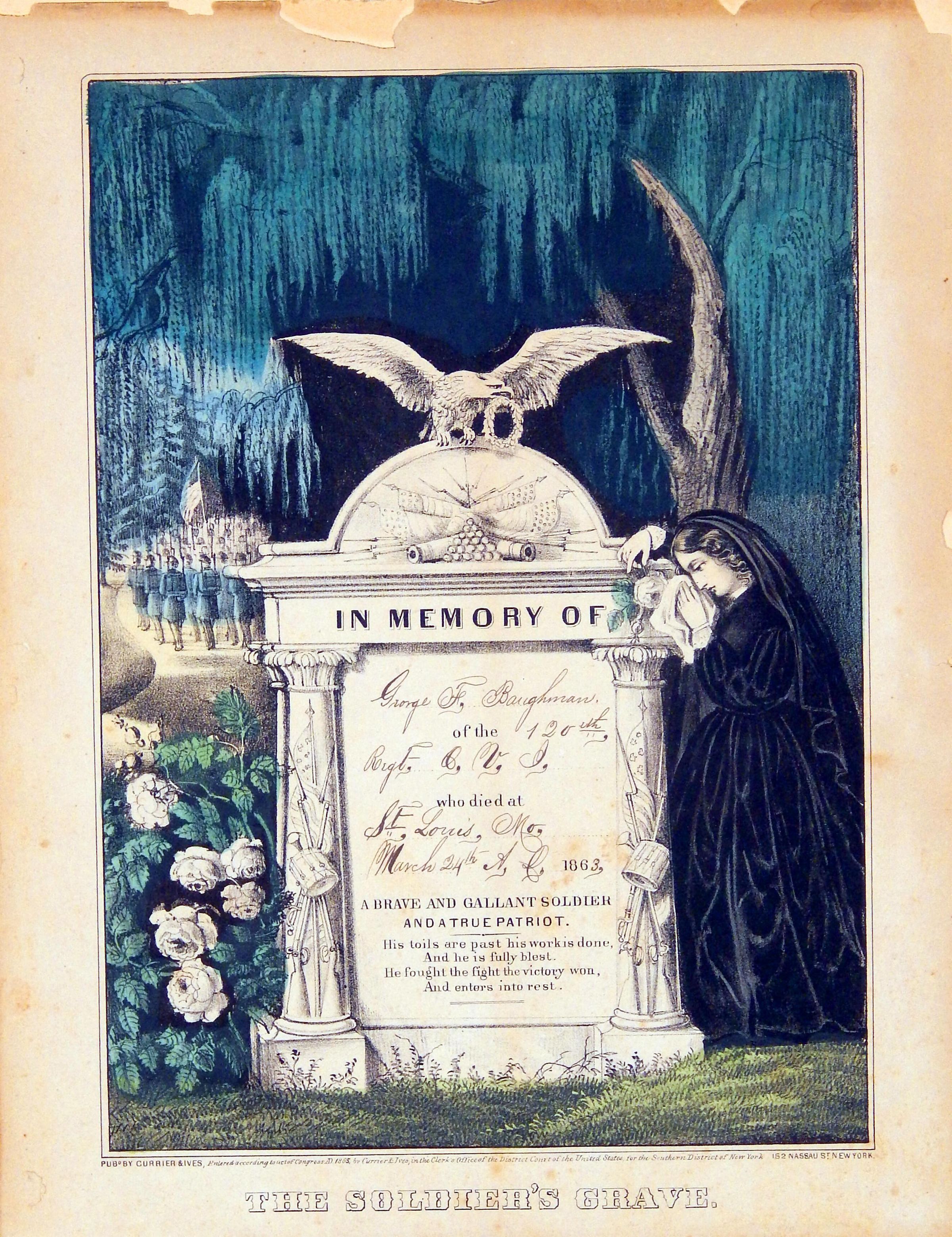Name/Title
The Soldier's Grave Lithograph, Currier and IvesEntry/Object ID
2021.2.85.41Description
"The Soldier's Grave," a Currier and Ives Civil War memorial lithographic certificate, is framed in dark wood with a gold accent border along the inside. The certificate shows a headstone surrounded by trees. A mourning woman leans against the headstone. The name and dates are filled in by hand. This certificate commemorates George Baughman, of the 120th Ohio Volunteer Infantry, who died in St. Louis on March 24, 1863. He is currently buried in Mount Olivet Cemetery on the grounds of Malabar Farm State Park.Context
Currier and Ives was the most popular and prolific American lithographic printing company of the 19th century. Nathaniel Currier (1813-1888) began his printing business in 1834 in New York City. In 1857 he asked his accountant James Ives (1824-1895) to become a partner in the company, and the name "Currier and Ives" was born. They described themselves as "publishers of cheap and popular prints." They advertised their lithographs of sporting scenes, nautical scenes, city life, rural vistas, historical events, and railroads as "Colored Engravings for the People."
When Nathaniel Currier died in 1888, James Ives took over the company's sole operation, continuing in that capacity until he died in 1895. Sons of the founders continued operating the business until 1907 when improvements in offset printing and photoengraving had significantly decreased the demand for their lithographic images.
According to military enlistment records, George Baughman, honored by this certificate, was born April 26, 1840 (not 1828, as his "new" stone at Malabar's Farm's Olivet Cemetery reads). He married Margaret J. Morris on September 25, 1862, and was mustered into Company B of the 120th Ohio Volunteer Infantry on October 17, 1862, only three weeks later. The 120th became part of the right wing of the Army of Tennessee. He fought in the battles of Chickasaw Bayou and Chickasaw Bluffs, and in the battle of Arkansas Post. He fell ill from dysentery, a severe intestinal inflammation, and died on March 24, 1863. he had been a soldier for only six months. He was initially buried in the cemetery at Jefferson Barracks in Saint Louis but later reburied at Mount Olivet, now a part of Malabar Farm.
- Adapted from research and text by Thomas Bachelder of the Malabar Farm FoundationLocation
Room
PantryBuilding
The Big HouseOhio State Park
Malabar Farm State Park
